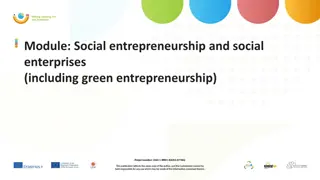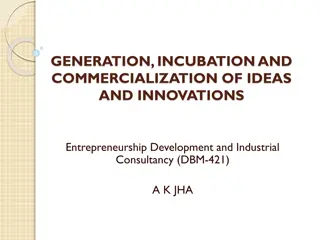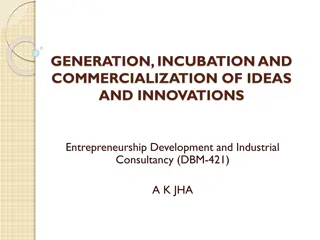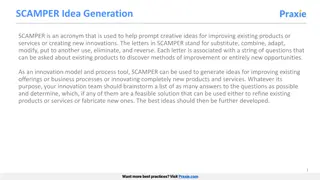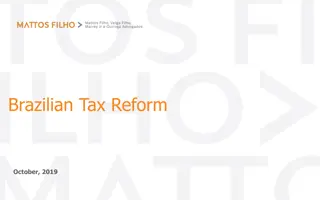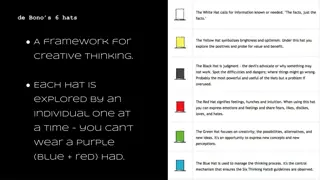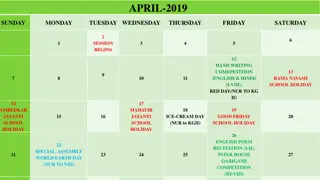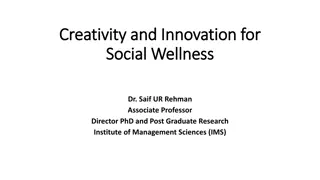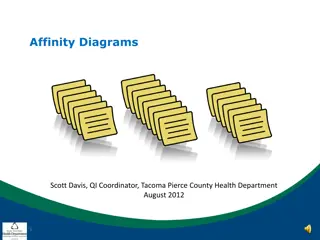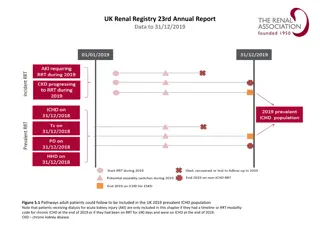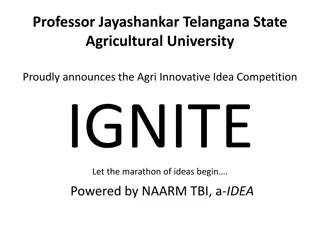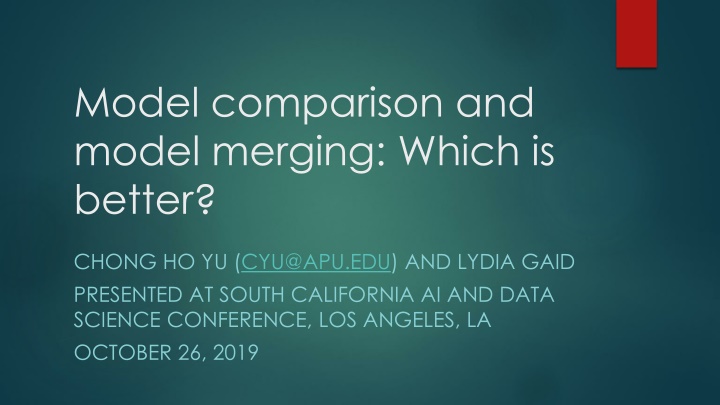
Boosting vs. Bagging for Model Comparison and Merging
Explore the comparison between bagging and boosting methods in model merging for enhanced predictive power. Discover how ensemble techniques like averaging, maximum, and voting can further improve model accuracy. Implementation tools such as JMP Pro and SAS Enterprise Guide are discussed, showcasing efficient ways to leverage ensemble methods for data science projects.
Uploaded on | 0 Views
Download Presentation

Please find below an Image/Link to download the presentation.
The content on the website is provided AS IS for your information and personal use only. It may not be sold, licensed, or shared on other websites without obtaining consent from the author. If you encounter any issues during the download, it is possible that the publisher has removed the file from their server.
You are allowed to download the files provided on this website for personal or commercial use, subject to the condition that they are used lawfully. All files are the property of their respective owners.
The content on the website is provided AS IS for your information and personal use only. It may not be sold, licensed, or shared on other websites without obtaining consent from the author.
E N D
Presentation Transcript
Model comparison and model merging: Which is better? CHONG HO YU (CYU@APU.EDU) AND LYDIA GAID PRESENTED AT SOUTH CALIFORNIA AI AND DATA SCIENCE CONFERENCE, LOS ANGELES, LA OCTOBER 26, 2019
Ensemble methods Unlike traditional statistic procedures which ate one- shot, data science methods create multiple models by resampling from the same data set e.g. random forest (bagging), gradient boosted tree (boosting) etc. At the end an ensemble model for each method is obtained. When the best from each is put together, we have the ensemble of ensemble. We can pick the best (the winner takes all) or merge the results (everyone has a voice).
Comparing bagging and boosting Bagging Two-step Random Boosting Sequential Give misclassified cases a heavier weight Sequent Partitioning data into subsets Sampling method Random sampling with replacement Systematic sampling Relations between models Parallel ensemble: Each model is independent Previous models inform subsequent models Goal to achieve Minimize variance Minimize bias, improve predictive power Method to combine models Weighted average or majority vote Majority vote Highly computing intensive Less computing intensive Requirement of computing resources
Ensemble of ensemble There are different ways for Ensemble to merge results: Average: As the name implies, average the prediction estimates from all models. Maximum: Pick the highest estimates of all models. Voting: Return the proportion of the models that determine the outcome (e.g. how often the predictor is selected)
Data source for illustration 2015 Program for International Student Assessment (PISA) By Organization for Economic and Cooperation Development Subject matters: Reading, math, and science Sample: 15-year old students from 80 countries/regions. Each country has at least 5,000 students. Questions: What factors can predict math performance? 500+ potential factors
Implementation Software: JMP PRO SAS Enterprise Guide SAS Enterprise Miner
SAS Enterprise Guide: Rapid Predictive Modeling RPM is fully automatic. The procedures are chosen by the program, not the analyst.
SAS Enterprise Guide: Rapid Predictive Modeling SAS EG output multiple fit statistics
Fitness indicators Error = noise variance The mean square error (MSE): the sum of squared errors (SSE) divided by the degrees of freedom for error (DFE) DFE is the number of cases - the number of weights in the model. This yields an unbiased estimate of the noise. Berry, J. (2016). Mean squared error vs average squared error. SAS Data Mining and Machine Learning.
Fitness indicators MSE is not useful for neural networks and decision trees because they don t have unbiased estimator. Usually DFE is negative in neural networks. Approximations for the effective degrees of freedom are often resource-intensive. Solution: Use average squared error (ASE), which is to divide the SSE by the number of N instead of DFE. Berry, J. (2016). Mean squared error vs average squared error. SAS Data Mining and Machine Learning.
Fitness indicators The RMSE is the square root of MSE. The absolute fit between the model and the data, or between the observed data points and the model s predicted values. The standard deviation of the unexplained variance Lower is better.
Fitness indicators Akaike's information criterion (AIC) and Bayesian Information Criterion (BIC) are relative fitness indices, not absolute. Must be done with model comparison In alignment with Ockham s razor: Given all things being equal, the simplest model tends to be the best one. Increasing the number of free parameters to be estimated improves the model fitness, however, the model might be unnecessarily complex. To reach a balance between fitness and parsimony, AIC and BIC not only rewards goodness of fit, but also includes a penalty.
Fitness indicators BIC is similar to AIC, but its penalty is heavier than that of AIC. Some authors believe that AIC is superior to BIC AIC is based on the principle of information gain. The Bayesian approach requires a prior input but usually it is debatable. AIC is asymptotically optimal in model selection in terms of the least squared mean error, but BIC is not (Burnham & Anderson, 2004; Yang, 2005).
SAS Enterprise Guide: Rapid Predictive Modeling SAS EG made the decision to select Average squared error
SAS Enterprise Guide: Rapid Predictive Modeling
SAS Enterprise Miner Flow chart of procedures In SAS EM the analyst can choose particular procedures.
SAS Enterprise Miner By default SAS EM chose Average squared error as the criterion for model comparison.
JMP: Model comparison Like SAS Enterprise Guide and Miner, JMP provides many fitness indices. You can choose the criterion and then pick the best model.
JMP: Model averaging You can also do model averaging
Model comparison and model averaging There is no single best. But if model averaging is used, then input from weaker models might affect the quality of the final model. And it is more computing-intensive. Picking the best is easier and cleaner.
How to pick the best? If predictive accuracy is the ultimate concern and the target variable is categorical, the misclassification rate or ROC curve should be used. If the target variable is interval, the average squared error should be used. This is the default in SAS. If you don t like absolute fitness criterion and want to avoid complexity, then relative criterion such as AIC and BIC should be used. Between AIC and BIC, AIC is better.
Pros and cons of software implementation SAS Enterprise Guide will make all the decisions for you. Use it if you have a pressing deadline. SAS Enterprise Miner let you make decisions and it has high performance (HP) and data mining (DM) procedures. JMP Pro also let you make decisions. It has fewer DM options but has a nicer interface.
PISA result: Hong Kong Term Number of Splits 28 SS Portion DURECEC: Duration in early childhood education and care PA029Q01NA: How many hours per week did your child attend a <pre- primary education arrangement> at the age of three years? 613279.625 0.8353 25 72528.4495 0.0988 PA027Q01NA: At what ages did your child attend a pre-primary education arrangement prior to grade 1? 22 48423.9351 0.0660
PISA: Japan Term Number of Splits 50 SS Portion IC011Q08TA: Frequency of use at school: Doing homework on a school computer. 457635.7 0.5602 IC011Q09TA: Frequency of use at school: Using school computers for group work and communication with other students. 3 312989.988 0.3832 IC011Q04TA: Frequency of use at school: Download\upload\browse schools web (e.g. <intranet>). IC011Q05TA: Frequency of use at school: Posting my work on the schools website. 47 30075.1038 0.0368 50 16174.5408 0.0198
PISA: Singapore Term Number of Splits SS Portion ST059Q03TA: Number of class periods required per week in science ST013Q01TA: How many books are there in your home? ST064Q01NA: I can choose the school science course(s) I study. 7 16843748.4 0.2946 3 7076026.02 0.1238 3 6372589.13 0.1115 ST121Q01NA: Motivation: Gives up easily when confronted with a problem and is often not prepared IC008Q12TA: Use digital devices outside school for uploading your own created contents for sharing 3 5634120.15 0.0986 3 4031342.53 0.0705
PISA: Netherlands Term Number of Splits SS Portion IC010Q04TA: Frequency of use outside of school: Using email for communication with teacher\submit of homework or other schoolwork IC010Q12NA: Frequency of use outside of school: Downloading science learning apps on a mobile device. IC003Q01TA: How old were you when you first used a computer? IC010Q03TA: Frequency of use outside of school: Using email for communication with other students about schoolwork. REPEAT: Grade Repetition 20 2126243.9 0.5644 7 967202.536 0.2568 12 560273.987 0.1487 20 72339.4588 0.0192 1 41030.7346 0.0109
PISA: Swiss Term Number of Splits SS Portion IC010Q12NA: Frequency of use outside of school: Downloading science learning apps on a mobile device. IC011Q06TA: Frequency of use at school: Playing simulations at school. DURECEC: : Duration in early childhood education and care IC011Q08TA: Frequency of use at school: Doing homework on a school computer. IC011Q05TA: Frequency of use at school: Posting my work on the schools website. IC010Q04TA: Frequency of use outside of school: Using email for communication with teacher\submit of homework or other schoolwork 5 1099821 0.2768 43 932805.131 0.2348 50 624127.764 0.1571 40 610619.915 0.1537 3 393114.004 0.0989 3 287251.341 0.0723
PISA: USA Term Number of Splits SS Portion ST013Q01TA: How many books are there in your home? REPEAT: : Grade Repetition 8 14729503.3 0.2853 10 9837783.37 0.1905 ST121Q01NA: Motivation: Gives up easily when confronted with a problem and is often not prepared ST076Q10NA: Before going to school did you: Work for pay SCIEEFF: Science self-efficacy (WLE) 6 6209281.09 0.1203 4 4579845.12 0.0887 4 3121990.26 0.0605




